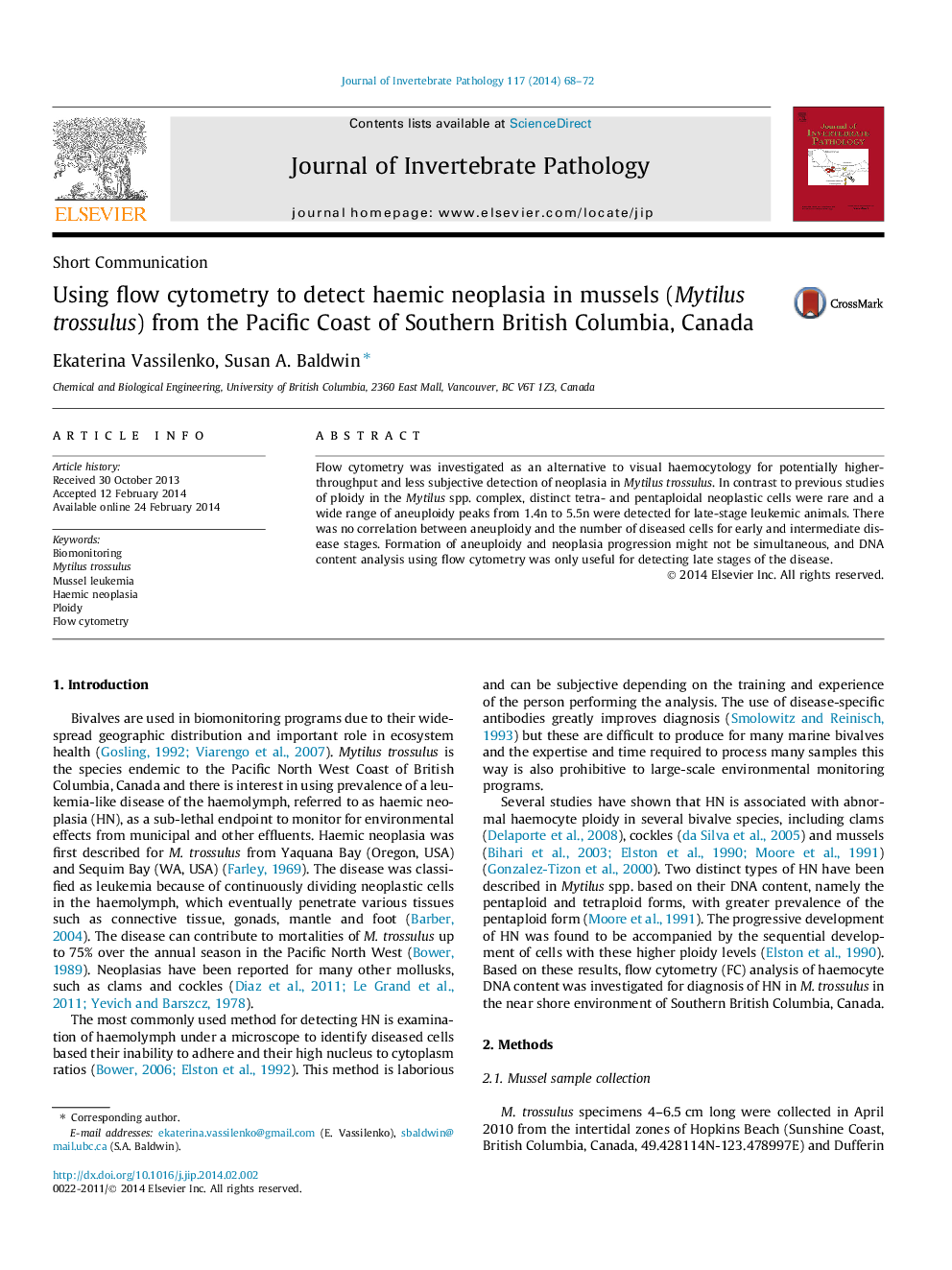| Article ID | Journal | Published Year | Pages | File Type |
|---|---|---|---|---|
| 4557806 | Journal of Invertebrate Pathology | 2014 | 5 Pages |
•Neoplastic M. trossulus haemocytes displayed a wide range of aneuploidy levels from 1.4n to 5.5n.•There was no correlation between aneuploidy and neoplasia progression for transitional stages of the disease.•Several cell populations with differing ploidy were observed in transitional samples.•Normal haemocytes had ploidy levels from 1.7n to 2.7n.•Some highly leukemic samples had normal ∼2n ploidy and no aneuploidy.
Flow cytometry was investigated as an alternative to visual haemocytology for potentially higher-throughput and less subjective detection of neoplasia in Mytilus trossulus. In contrast to previous studies of ploidy in the Mytilus spp. complex, distinct tetra- and pentaploidal neoplastic cells were rare and a wide range of aneuploidy peaks from 1.4n to 5.5n were detected for late-stage leukemic animals. There was no correlation between aneuploidy and the number of diseased cells for early and intermediate disease stages. Formation of aneuploidy and neoplasia progression might not be simultaneous, and DNA content analysis using flow cytometry was only useful for detecting late stages of the disease.
Graphical abstractPhase contrast microscopy images of normal (panel A), transitional (panel B) and late-stage leukemic (panel C) haemocytes (60× magnification). The normal cells have conspicuous pseudopodia that enable them to spread and stick to the glass slide. Leukemic cells are round and do not adhere to the slide. At the late stage their high concentration overwhelms the haemolymph.Figure optionsDownload full-size imageDownload as PowerPoint slide
